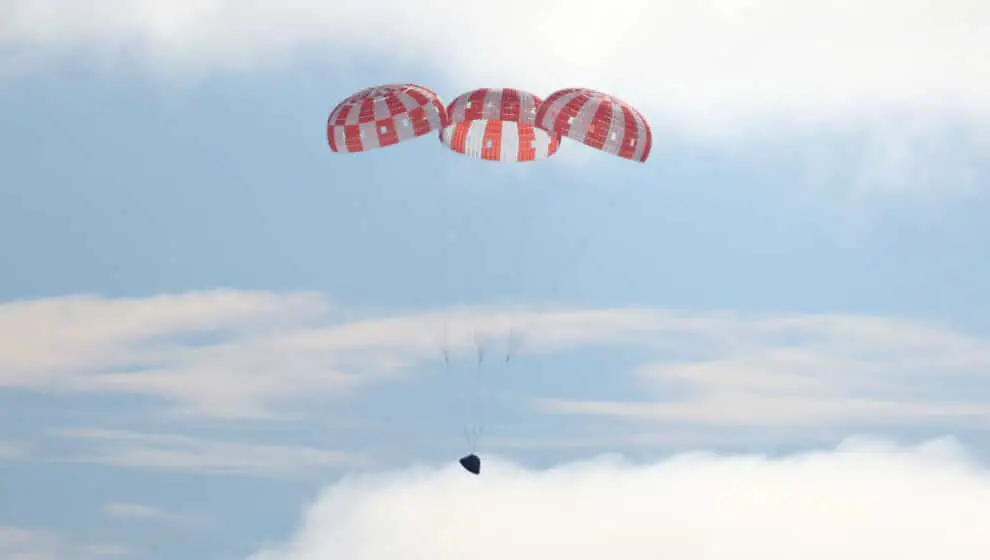Communication, teamwork, and servant leadership are three of the most important virtues in running the world’s largest space agency.
Key Details
- It has been an exciting few weeks for NASA. After a decade of development and delays, it launched its Space Launch System (SLS) on November 16. The unmanned Orion capsule landed on Earth on Sunday morning.
- The successful launch of Artemis I has brought out alot of excitement, as Americans are feeling excited about the possibility of a Moon landing as early as 2025.
- It is also creating opportunities for private companies as NASA contracts major aspects of the new SLS rockets to the private sector.
- An underrated aspect of the organization’s success is just how much teamwork, communication, and servant leadership are necessary to get each rocket to the launch pad, long before it is launched into space.
- Thousands of engineers, private contractors, experts, and politicians worked together to design, build, and launch Artemis I and that wouldn’t get done without strong leadership and teamwork.
Why It’s Important
Remote operations are challenging, and many modern corporations struggle with productivity when employees don’t work from the same office. NASA is a federal agency and it has an even greater challenge in coordinating thousands of workers across 50 states, multiple flight centers, and representing international space agencies and corporations. These all have to come together to work seamlessly with some of the most advanced technology and cutting-edge science humanity is capable of.
Doug Parkinson is the Launch Integration and Mission Operations Lead at Marshall Space Flight Center. He handles launch operations and ground operations for the SLS program. He and his team are currently working in the “post-flight evaluation period” following the launch of Artemis I, analyzing data for the months following the launch and preparing reports. He has been working in the SLS program since 2012.
“It’s been surreal. I remember watching the rocket take off the pad and it was almost hard to believe it was really going. It’s been very stressful leading up to the launch and through the launch, it’s a very intense eight minutes until the engine cutoff. It’s exciting to see them all go off like clockwork, a testament to the engineers and team we have supporting the launch,” he says.
Backing up a Bit
NASA operates multiple sites across the U.S., with different facilities controlling different projects. The Hubble Space Telescope is managed by Goddard Space Flight Center in Greenbelt, Maryland. NASA’s Jet Propulsion Laboratory is located in Pasadena, California.
Separating sites allows NASA to base locations in geographically ideal locations, take advantage of preexisting military infrastructure, and benefit individual state economies with base locations.
NASA’s three most important hubs are Kennedy Space Center in Merritt Island, Florida, where rockets are launched as close to the equator as possible; Johnson Space Center in Houston, Texas, where Mission Control is based; and Marshall Space Center in Huntsville, Alabama, a hub for design and development engineering. The latter also keeps critical subject matter experts monitoring the launch vehicle and the engineers at Mission Control, including Parkinson’s team.
Communication
Maintaining multiple laboratories and control rooms across thousands of miles is a challenge, and it was more of a challenge prior to the creation of the internet and the advancement of video call technology.
“We all have to work together in designing the rocket, building the rocket, launching the rocket, and conducting mission operations. We pull from expertise areas across the country. Technology has of course advanced communications. We have our own communication network between sites, and we need to maintain it and be able to maintain communications 24/7 between the International Space Station, Houston, and Kennedy. These are critical systems,” says Parkinson.
Teamwork
Parkinson describes himself and his colleagues as perfectionists. As engineers and scientists, they want to overcome complex challenges perfectly. In order to do that with something as complex as rocket science, he and his team have to build each other up, and rely on each other’s skills, and build strong networks of communication that allow them to address challenges as they arise. Those challenges only get harder and more ambitious as you set your sights on new goals.
“In order to fly and conduct missions, it is going to be crucial to have teamwork. We have experts all across the country and pieces of the rocket come from the European Space Agency. We need experts who we can pull on so we can respond to an issue if it arises. It’s going to become even more critical to have that teamwork operating together, designing something together when we do more complex missions to the Moon and Mars,” he says.
Servant Leadership
Parkinson runs his team with a “servant’s heart.” In order to achieve his goals, he needs to help others achieve their goals.
“When I first joined, this organization needed some work and it didn’t need someone coming in and dictating. What I find to be a good approach is enabling people who want to do a good job, helping them be successful. My bosses have supported my endeavors and that is the way I approach my team. I use my experience and knowledge to help make them successful, and if you walk with that mentality you get a better turnaround. They’re vested in the work. That’s what I find in leads all across NASA,” he says.
